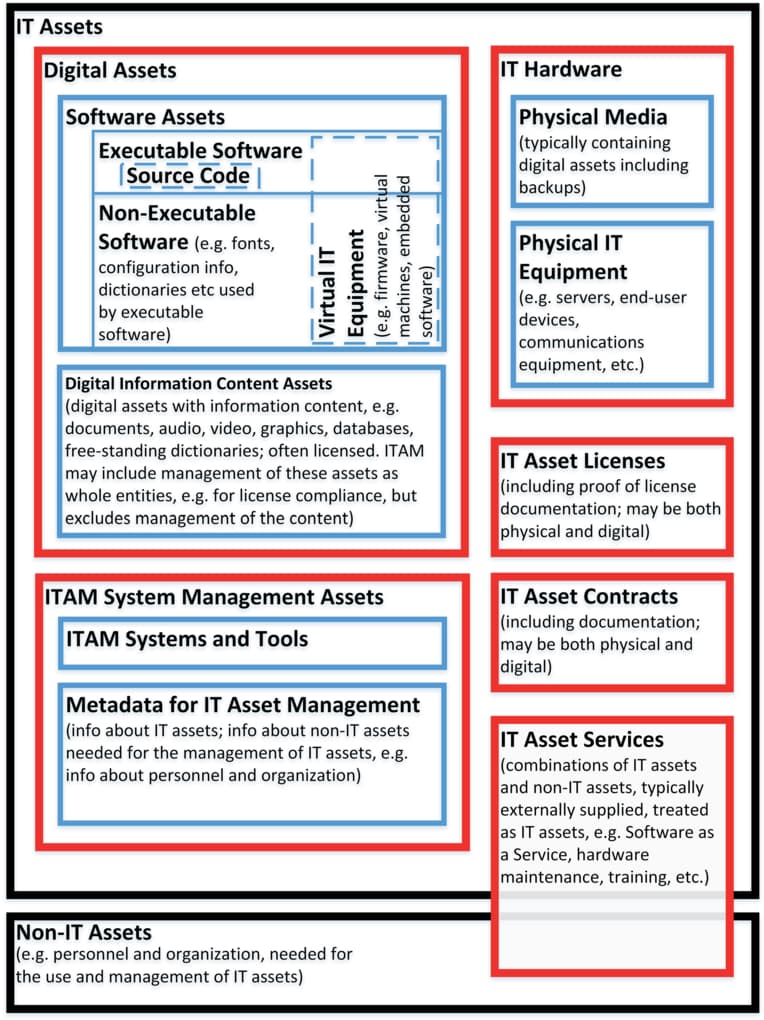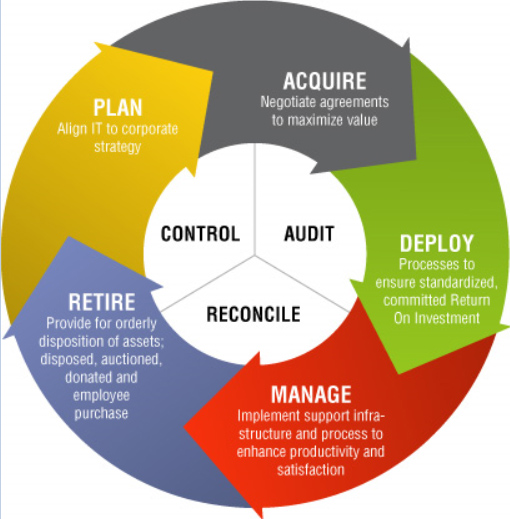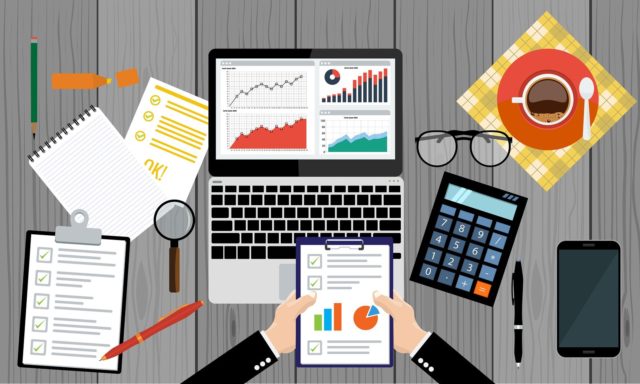The efficient management of various assets is essential for every organization. For making timely and correct decisions, your company’s management must use relevant, updated, and accessible data about all asset systems to know if some assets need to be purchased, updated, or disposed of. Building influence on the market, the most precious today is a service or product produced at the optimal cost and optimal time without delays or defects. The organization’s assets support the production or providing services, and those who ignore proper asset management risk make their role less relevant.
- Definition of IT assets
- Definition of ITAM
- Who are the potential clients of the ITAM software?
- What benefits can you gain with ITAM Software?
Making the necessary changes at the right time helps avoid legal or cost risks and always stay forward-minded and highly competitive. In this article, we’ll talk about IT assets particularly and consider who can use ITAM Software and what advantages it can provide.
Definition of IT assets
So what are the IT assets? According to iso.org definition, an asset is an item, thing, or entity with potential or actual value to an organization. Value can be tangible or intangible, financial or non-financial, and includes consideration of risks and liabilities. It can be positive or negative at different stages of the asset life. Physical assets usually refer to equipment, inventory, and properties owned by the organization. These assets are the opposite of intangible assets, non-physical assets such as leases, brands, digital assets, use rights, licenses, intellectual property rights, reputation, or agreements.
 Source: www.iso.org
Source: www.iso.org
Summing up, IT assets are the items within an organization’s information technology environment that help to run business operations. They may include:
- Hardware items
- Software programs
- IT Services (development, maintenance, and release)
- Company-owned information, including licenses, procurement data, etc.
Definition of ITAM
IT asset management (also known as ITAM) is an ongoing process of tracking IT assets and running through their lifecycle, managing risks, and changes to ensure continuous secure business operations.
Considering that the naming and number of the stages and the activities under each stage usually vary in different industry sectors and are determined by the organization, there is a common logic:

The right way to manage assets is to use a sophisticated software program. ITAM software is an automated, long-term solution for technology lifecycle management. It contains diverse functions to track available assets at all stages right from purchase to disposal. It also allows you to check whether an asset is up-to-date, protected and configured correctly.
For most organizations, ROI (The Return on Investment) is the main KPI of the ITAM effectiveness. That’s why it is essential to have an overview of total IT assets, business value, usage, and expenses. The constant monitoring will also help to track asset devaluation, allowing to make procurement decisions.
A critical component of the IT asset management system is the contract data. Data is often collected from the manufacturer or retailer and includes license entitlements, version number, vendor SKU, service levels, implementation period, warranties, and other critical information about assets.
Another significant feature of ITAM Software is the automation of the processes. Keeping track and receiving forehanded notifications about outdated software or expiring licenses or procurement of new equipment can significantly save time and reduce unnecessary expenses when using obsolete assets. After comparing costs and potential profit, the system can automatically optimize your expenses as well.
Effective IT asset lifecycle programs require accurate and actionable information to help IT asset managers make correct decisions. Advanced asset management software is designed to consider all the factors about operations and costs needed to be part of any asset lifecycle choice. Regardless of the asset lifecycle choices you are making, it’s an essential element in any effective replacement program and ultimately influences your operation’s productivity, efficiency, and profitability.
Who are the potential clients of the ITAM software?
Consider a small business like a printing, advertising agency, or online store. From the start, they can easily manage their assets (and IT assets) in Google sheets. However, with the development of business, it becomes more challenging to keep track of all old and new assets, their status. When something is needed to be found or updated, it may take some time to see and do certain operations. This potentially can lead to rising maintenance costs or even losing customers. As for more significant organizations, it is vital to have such a software program and IT asset manager responsible for keeping the system running properly.
Every organization is different. Maybe there are complicated dependencies between departments across an enterprise. You might want to keep a record of intangible assets like licenses and compliance documents to reduce risk. Perhaps your requirements are simpler and involve tracking an inventory of computers.
Fortunately, asset management software is available for each task, from simple and affordable integrations to complex, high-dollar solutions. Whether you go with a lightweight tracker or an enterprise-level system, the most critical consideration is finding the option that will work best for your unique use case.
What benefits can you gain with ITAM Software?
IT asset management is essential for an organization for several reasons. It can help you keep IT management and procurement costs low, but it also ensures your company uses the latest tech to provide your clients with the best services.
Proper management: enhances strategic infrastructure planning; prevents over-licensing; allows you to achieve significant savings not only on direct costs for software but also on related processes and infrastructure costs; reduces administration costs; enable you to receive accurate information about the current state of the software used; minimizes legal risks.
Let’s review the benefits in detail.
- ITAM Software helps to plan resources efficiently. By establishing the requirements of assets, it is possible to optimize the assets’ use throughout the assets’ life cycle. Effective planning of assets through different stages of an asset lifecycle will ensure that the assets are adequately maintained. If you have a plan, it is much easier to monitor all assets through their life cycle and makes necessary arrangements. Responsible IT asset managers can know about excess assets, which lead to unnecessary spendings or, on the other hand, acquire missing assets. They can use the information contained in the asset management system to make a reasonable purchase decision.
Effective planning of assets will help in delivering value for the organization.
- Monitoring the assets located in different locations and departments from one point. Let’s say your company has several departments or locations for assets. Imagine the headache and time if the IT asset manager needs to verify the assets or check them out for maintenance reasons from different departments, which could be located in different cities or even countries. The task is much easier when ITAM software provides a structure for the assets a company has and the location of each one to check their status or make strategic decisions.
- Modern IT assets reduce cybersecurity vulnerabilities. If you are using outdated IT assets, then gaining entry into your company’s secured files would be a breeze for the hackers. The best security measure against cyber attacks is to ensure your IT hardware and software are up-to-date with the latest firewall and other cybersecurity measures. It starts with IT asset management. Regular monitoring of IT assets would keep you informed of your hardware and software lifecycle so that you can update them as needed.
- Up-to-date IT assets keep normal workflows processes. Technology is becoming increasingly vital in our everyday lives, particularly in the corporate sector. Almost all our work depends on the quality and speed of our tech gear. So, up-to-date software and IT hardware won’t create a hindrance in the workflow. To reduce negative influence on the employees’ productivity, slowing their progress, and to lead to missed deadlines, all necessary IT assets must be properly tracked and updated.
- Knowledge of your bottlenecks. With a suitable IT asset management system, you’ll be aware of the weak links in your network. You will know which hardware or software is close to expiry and in need of an upgrade. Having this information in advance, you won’t need to put operations on hold until you find and fix the failing IT asset. With a proper layout of your network infrastructure, you will know the points of failure, where they are, and how to fix them. An efficient IT asset management strategy will help you set up redundancies in the system so that you are ready for unforeseen outcomes and ensure the business continues as planned.
- Saves time and efforts with auditing and compliance. IT asset management also plays a role in helping you ensure your company meets regulatory compliance guidelines. Whether it is a small startup or large-scale enterprise, it is impossible to guarantee that your network meets all regulations. But a proper asset management system can help you keep track without manual analysis.
If you don’t have a map of your network infrastructure, including where you have all the data stored, how can you guarantee that you have removed all details about a person?
It is impractical to expect that you meet such regulations without a comprehensive asset management system. There may be a backup you missed or another asset with the data that wasn’t supposed to be there. You may skip these details without an IT audit, which would lead to a violation of the compliance regulations and cost you a hefty fine.
- Tracking asset movement. Replacing outdated hardware and software with updated versions is the usual course of action for businesses. Sometimes the process happens more frequently than you might assume.
Without a proper IT asset management system, it would be a challenge to track these incoming and outgoing assets, which will create inaccuracies in your network map. You won’t know which hardware is new or which ones you removed, leading to a waste of time and effort in finding the missing pieces.
An IT asset management system will help maintain a record of all changes in your network infrastructure map. Not only will you know which hardware needs replacement or updating, but also which components you removed.
- Optimizing budget. Record expenses and maintenance, procure new assets – is an ongoing activity, the result of which to determine the optimal distribution of costs and incomes.
Every asset is associated with expenses beyond the initial cost. There are maintenance, depreciation, and other charges that assets incur. When determining whether an asset is no longer a good value, the asset manager needs to record past and ongoing expenses.
Lastly, when the asset has reached the end of life, and IT asset manager can tell whether the sale on disposal will be reported as a profit or a loss. The asset management software will accurately calculate the gain or loss based on the asset’s purchase price and depreciated cost.
- Properly Dispose Of Outgoing Assets. All IT assets in an organization need to be disposed of and replaced at a specific date. Tracking and equipment’s life cycle, depreciation rate, and more is a taxing and time-consuming job. But an IT asset management strategy can make life easier for IT asset managers.
IT asset management is crucial for adequately disposing of outgoing assets. We discussed that a proper system could track all the incoming and outgoing hardware. Additionally, it will help you remember which asset stored what data.
Adequate disposal of outdated IT assets is also a regulatory standard, such as the payment card industry and data security standard (PCI DSS). If some outdated hardware had sensitive client information, then you can erase all traces of that data before removing that IT asset from your network.
An IT asset management software can document the disposal of outgoing equipment that guarantees that the data is unrecoverable.
FAQ
Conclusion
Summing up, we can say that IT asset management is a crucial aspect of any business, especially in today’s rapid development of technology and high competition.
Embedding these progressive insights into your organization’s IT asset management system will help IT executives visualize the ROI on IT assets and deliver data to other key stakeholders on how those assets directly benefit the company’s business goals.
ITAM software can optimize and simplify IT asset strategy and support in vital strategic business decisions.






